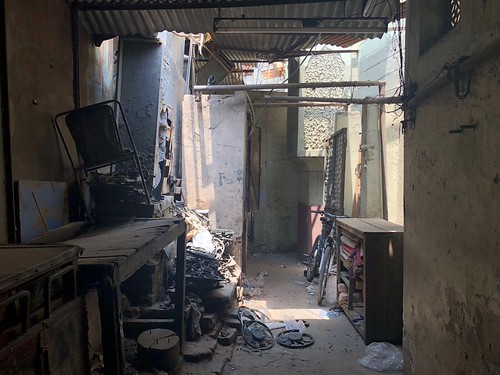
City Monument – A Lesser Known Baoli, Matia Mahal

A step-well around the corner.
[Text and photos by Mayank Austen Soofi]
With a mere 380 years behind it, Old Delhi isn’t all that old. (Sorry to shatter your illusions)
Centuries before the Walled City was founded, it still had some life. And one finds that evidence in the existence of a pre-Mughal step-well.
With some persistence you’ll be able to visit this baoli at the far end of an alley that shoots off Matia Mahal street. Don’t expect to see one of those vast sprawling baolis you might have come across in Mehrauli. Here, the step-well lies virtually hidden within the neighbourhood’s ramshackle buildings, and lies behind a metal window; indeed, it looks more like a closet than a well.
Fortunately, a portion of the window’s metal screen is torn through which you may peer inside. Once the eyes adjust to the darkness within you can sense the sheer depth of the baoli, the texture of its walls—and the graceful curves of its arches.
“This baoli dates from long before Old Delhi came into existence,” reveals scholar Abdul Sattar who’s writing a book about the Walled City. He says the step-well was built by roaming gypsies when the area was just another wild and hilly region—“a forbidding place teeming with animals and outlaws.”
The formal establishment of Old Delhi in 1638 after Emperor Shahjahan moved his capital from Agra must have disrupted this way of life. And now Shahjahan’s city too has been drastically disrupted, but the old baoli has somehow survived, hidden away, far below an obscure alley that is now resounding with the cry of a rooster.
Older than Old Delhi
1.
2.
3.




Recent Comments